
27.2K
Downloads
382
Episodes
The study of the Bible in its historical context - with a focus on the archaeology, history, geography, customs , culture, and even the languages of the ancient Middle East. WE ask what did they understand THEN - the original intent of the Lord - so that we can expand and enrich our understanding NOW and thus become true disciples of Adonai Yeshua as in John 8:31-32.
Episodes

Saturday Jan 06, 2024
Saturday Jan 06, 2024
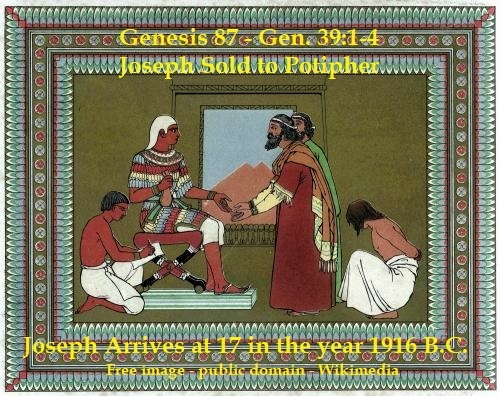
THE STORY OF JOSEPH - lesson 6
GOD'S PARADIGM OF SALVATION OF THE WORLD
In this podcast I overviewed the amazing dating of the Hebrew Bible by the great scholar Edwin Thiele. I mentioned in the podcast that how did I come up with the date of 1916 B.C. for the year Joseph entered Egypt at age 17. So, as promised, this rest of this article is to give more detail on Edwin Thiele’s work and how we get to these dates. Again, this is not something I came up with. I don’t teach my opinion or my speculations as fact.
I have studied the great scholar Edwin Thiele's work on the dating in 1 Kings 6:1 …
Now it came about in the four hundred and eightieth year after the sons of Israel (Jacob’s other name) came out of the land of Egypt, in the fourth year of Solomon's reign over Israel, in the month of Ziv which is the second month, that he began to build the house of the LORD
Edwin Thiele’s work and research is documented in his book,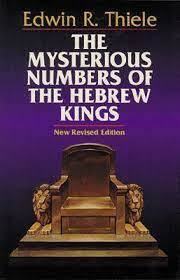 “The Mysterious Numbers of the Hebrew Kings.” He shows that the 4th year of Solomon's reign is 966 B.C. which means the Hebrews left Egypt in 1446 B.C. (we get this by adding 966 and 480 or 966+480 = 1446 B.C. since we are going back in time). But, how did Edwin Thiele come up with this date? You’ll hear many us this date but they will NOT know the source. They will not be able to give you the historical research to show where this date came from its total reliability. However, in Edwin’s book this is shown. Thiele is the one who gave us this date of 966 B.C. Let’s go see what Thiele discovered.
“The Mysterious Numbers of the Hebrew Kings.” He shows that the 4th year of Solomon's reign is 966 B.C. which means the Hebrews left Egypt in 1446 B.C. (we get this by adding 966 and 480 or 966+480 = 1446 B.C. since we are going back in time). But, how did Edwin Thiele come up with this date? You’ll hear many us this date but they will NOT know the source. They will not be able to give you the historical research to show where this date came from its total reliability. However, in Edwin’s book this is shown. Thiele is the one who gave us this date of 966 B.C. Let’s go see what Thiele discovered.
Thiele was studying the ancient king lists of the ancient Assyrians. In these lists, one called the Eponym Canon, references a solar eclipse in the reign of Assur-dan III in the month of Simanu. Astronomers today easily found the date of this astronomical event as June 15, 763 B.C. The Assyrians used this solar eclipse to give dates of the reigns of their kings dating from 892 to 648 B.C. These king lists developed by the ancient Assyrians became their calendar. Thiele saw that this seemed to be an accurate calendar and could be used to understand dates of events in other cultures and among other ancient peoples like the Hebrews in Israel. But, was the Assyrian “calendar” correct? Was it accurate? Thiele needed to find another “calendar” that would support the dating in the Assyrian calendar.
Thiele discovered another ancient writing, the CANON OF PTOLEMY, a Greek astronomer 70-161 A.D. His writings relate to Middle Eastern history and include a very interesting event; it was a lunar eclipse that happened on March 19, 721 B.C. which was an easy date for our contemporary astronomers to determine. This lunar eclipse and the dating used from this event in the Canon of Ptolemy result in another “calendar” if you will. When one matches the Canon of Ptolemy with the Assyrian “calendar” one verifies the accuracy of the other. Thiele discovered two amazing documents with two amazing astronomical events that resulted in precise dating of key events and reigns of kings in ancient time. So, how does this help us in Bible dating?
Since the Assyrian king list and its dates are now found by archaeology to be accurate we now know the exact dates of the reign of Shalmaneser III. He reigned from 859-824 B.C. Two of these years are critical for us. The 6th year of Shalmaneser’s reign and the 18th year. First, let’s focus on the 6th year of his reign.
A tall rock with ancient writing was discovered in Turkey in 1851. It is called the Kurkh Stele (image is public domain accessed at Wikimedia). On this stele Shalmaneser write about the battle of Qarqar. This battle occurred in the 6th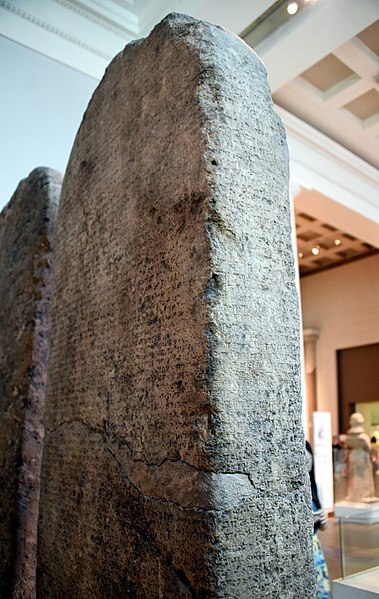 year of his reign which now has easily been determined from the Assyrian king list as 853 B.C. What is so awesome is on the stele the Assyrian king gives names of the kings he fought against in the battle. Ready for this? Here’s our connected to the Bible. Shalmaneser fought against Ahab who was married to Jezebel. The Bible says that Ahab ruled for 22 years as we read in 1 Kings 16:29 …
year of his reign which now has easily been determined from the Assyrian king list as 853 B.C. What is so awesome is on the stele the Assyrian king gives names of the kings he fought against in the battle. Ready for this? Here’s our connected to the Bible. Shalmaneser fought against Ahab who was married to Jezebel. The Bible says that Ahab ruled for 22 years as we read in 1 Kings 16:29 …
Now Ahab the son of Omri became king over Israel in the thirty-eighth year of Asa king of Judah, and Ahab the son of Omri reigned over Israel in Samaria twenty-two years.
So, the next question is of the 22 years of Ahab’s reign, when did he fight in the battle of Qarqar? On top of that when did Ahab die? If we knew that then we’d know then Ahab started to rule as king of Israel, the northern 10 tribes.
In the year 1846 another amazing stone was discovered. It is now known as the Black Obelisk of Shalmaneser III (image is public domain accessed at Wikimedia). On this stone pillar there is an amazing picture; the picture and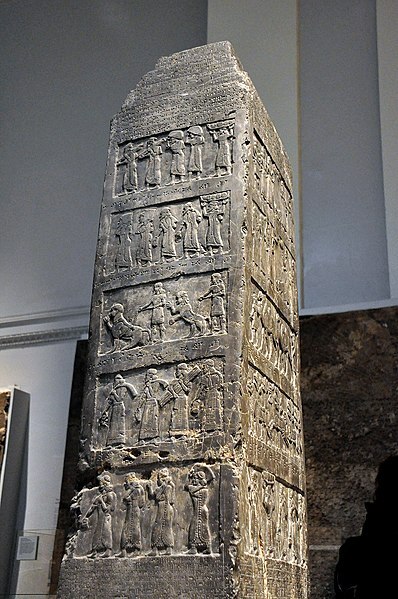 description is of king Jehu kneeling and paying tribute to the Assyrian king, Shalmaneser III. Jehu became the king in Israel 12 years after Ahad died. Just consider 2Ki 10:35-36 …
description is of king Jehu kneeling and paying tribute to the Assyrian king, Shalmaneser III. Jehu became the king in Israel 12 years after Ahad died. Just consider 2Ki 10:35-36 …
And Jehu slept with his fathers, and they buried him in Samaria. And Jehoahaz his son became king in his place. Now the time which Jehu reigned over Israel in Samaria was twenty-eight years.
Jehu reigned as king for 28 years. On the Black Obelisk Assyrian ancient records state that it was the 18th year of Shalmaneser III when Jehu paid homage to Shalmaneser. But, the 18th year of Shalmaneser’s reign from the ancient Assyrian king’s list is 841 B.C. But, Ahab fought the battle of Qarqar in 853 B.C. as we saw on the Kurkh Stele. Subtracting 853 and 841 is 853-841=12. There were 12 years between the battle of Qarqar and when Jehu offered tribute to Shalmaneser. The Bible helps us with those 12 years. First we read in 2 Kings 8:25-26 that Ahaziah the son of Ahab became king after Ahab and was king for one year. Then in 2 Kngs 1:17 and 3:1 we find that Jehoram, the son of Ahab and Ahaziah’s brother became king when Ahaziah died and was king for 12 years. Thiele also discovered that the first year of Jehoram’s reign was what is called an accession year. He officially became king after the accession year so only served for 11 years.
So, let’s put this all together. In 841 B.C. Jehu offers tribute to Shalmaneser III as we just saw. 841 B.C. is 12 years after the battle of Qarqar in 853 B.C. in which Ahab fought. But, Ahab is killed in another battle as one can read in 1 Kings 22:29-40. And in the 12 years after Ahab’s death his son Ahaziah reigns for 1 year and then his other son Jehoram reigns for 11 years (we’re not counting the accession year). But, Jehu becomes king after Jehoram. We know the year. It is 12 years after the battle of Qarqar of 841 B.C. Which means Ahab dies in 853 B.C. in the same year as the battle of Qarqar and shortly thereafter. This is huge!! We now have the date of Ahab’s death. Why is this so important?
From this date of 853 B.C. based upon real archaeology and history and also supported by the Bible, we can now go backwards in time to Solomon. For example, Ahab dies in 853 B.C. but reigned for 22 years. Ahab’s reign then starts in 874 B.C. when his dad, Omri dies. But Omri was king for 12 years as we read in 1 Kings 16:23. We go back and through other connections between the kings of Judah and the kings of Israel we come to the year when Solomon became king. Solomon became king in 970 B.C. Now we can take this to the verse that we first considered 1 Kings 6:1 …
Now it came about in the four hundred and eightieth year after the sons of Israel (Jacob’s other name) came out of the land of Egypt, in the fourth year of Solomon's reign (966 B.C.) over Israel, in the month of Ziv which is the second month, that he began to build the house of the LORD
If the 4th year of Solomon’s reign is 966 B.C. then 480 years prior to this the sons of Jacob (Israel) left Egypt. Moses led the Hebrews out of Egypt in 1446 B.C. that we get by adding 966+480=1446 B.C. From the Assyrian King list that Thiele discovered we now have the precise year of the Exodus. Once we have this date things get very interesting very fast.
As an “fyi” you can study this in more depth at the following links. These are scholarly sites that help us understand the amazing and awesome work of Edwin Thiele to gives us the dating in the Bible. Here’s the links to check out …
Article 1 – great extensive summary of Thiele’s work
https://www.andrews.edu/library/car/cardigital/Periodicals/AUSS/1996-2/1996-2-12.pdf
Article 2 – a second awesome scholarly article on the exactness of Thiele’s Bible chronology and its almost universal acceptance
https://digitalcommons.andrews.edu/cgi/viewcontent.cgi?article=1497&context=auss
Let’s continue and take these dates into the events of Exodus and the events in the life of Joseph. Jacob is Israel in the phrase "the sons of Israel" so this can be understood to mean that the sons of Jacob left Egypt in 1446 B.C. and in Exo. 12:4-41 …
Now the time that the sons of Israel (Jacob) lived in Egypt was four hundred and thirty years. And at the end of four hundred and thirty years, to the very day, all the hosts of the LORD went out from the land of Egypt
This might be understood that Jacob (Israel) entered Egypt 430 years prior or in 1876 B.C. All this from the dates Thiele came up with for the battle of Qarqar, Ahab's death, and the date of the 4th year of Solomon's reign.
In 1446 B.C. Moses is 80 (Exo 7:6-7) and the likely Pharaoh at the time of the Exodus was Amenhotep II. If Moses was 80 then Moses was born in 1526 B.C. and the Pharaoh then is probably Ahmoses I. Ahmoses I defeated the Hyksos and could it be that Ahmoses enslaved the other Semites in the delta, the Hebrews, since Ahmoses needed to strengthen his northern border and stamp out the potential threat that could come from the Hebrews? Ahmoses did build forts on his northern border. This means he may have considered the Hebrews potential enemies since they we Semites just like the Hyksos. What better way to stamp out the threat then by enslaving the Hebrews. Since Ahmoses I reign was probably 1570-1544 B.C. he could have put the clamps down on the Hebrews years before Moses' birth in 1526 B.C.
Returning back to 1446 B.C. and substituting the name Jacob for Israel one may conclude that Jacob (Israel and his sons) entered Egypt 430 years earlier or in the year 1876 B.C. At this time Jacob (Israel) tells Pharaoh that he is 130 years old as found in Gen. 47:8-9. He died 17 years later in 1859 B.C. as noted in Gen. 47:28. Knowing Jacob's age upon entering Egypt and the year (thanks Edwin!!) we can then easily find the following ...
* Jacob born in 2006 B.C. since he was 130 in 1876
* Isaac was born in 2066 B.C. since Isaac was 60 at Jacob and Esau's birth Gen. 25:26
* Since Abraham is 100 at the birth of Isaac in 2066 B.C. - as we find in Gen. 21:5 - then Abraham was born in 2166 B.C.
* Abraham left Haran for Canaan when he was 75 years old or in the year 2091 B.C. as found in Gen. 12:4
Knowing the years of these events provides me with an interesting door that I have not entered yet. If I go through the door I would be able to research what is going on in Egypt, the names of the pharaohs, and I could study the culture and history of Canaan and much more. For example if I know the dating of when Abraham is in Canaan, might archaeology help me determine who Abimelech was that Abraham made a covenant with at Beer Sheba? Could I determine using archaeology living conditions in the northern Negev and in ancient Hebron?
Once again taking Thiele's work and expanding its connection to the events prior to the Exodus, there is a very interesting result when this is applied to the life of Joseph. See the chart below ...
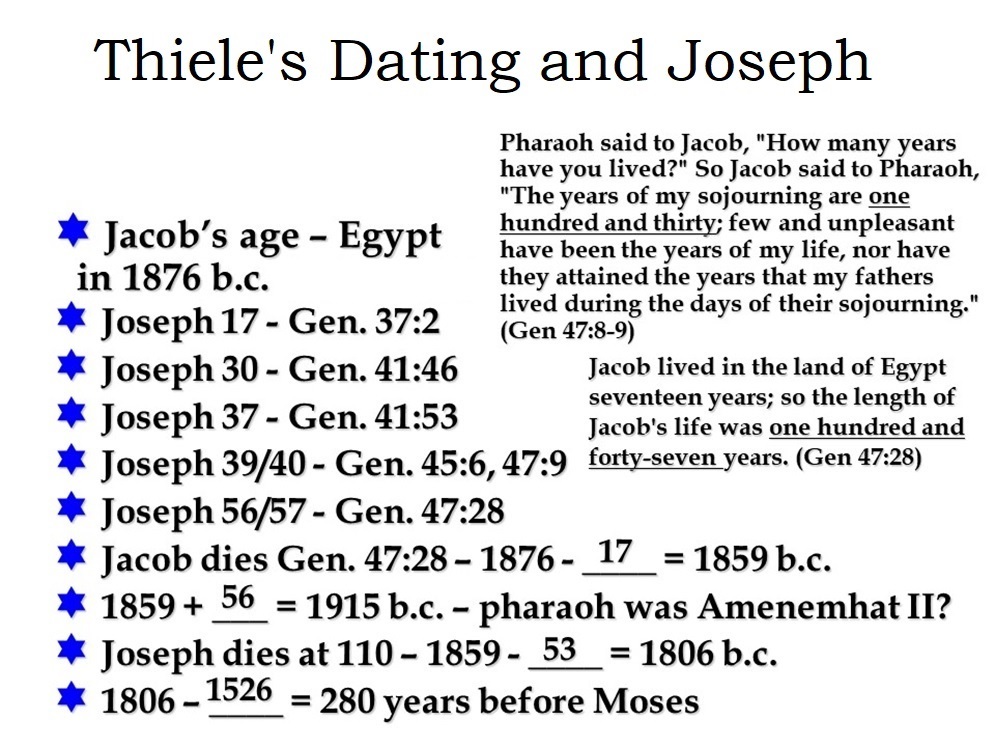
Since Jacob (Israel) was 130 when he entered Egypt in the year 1876 B.C. and died 17 year later in 1859 B.C. one can easily determine the connection between the ages of Joseph, the events in his life as found in Genesis, and the years these events would've occurred. Use the chart above as a help as we go through the following. Also, get your Bible handy and check the verses used.
Starting in Gen. 37:2 we find Joseph is 17 and he begins his work as 2nd in command of Egypt at age 30. He is 37 at the end of the 7 years of plenty in Gen. 41:53 and 39 or 40 in 2nd year of the famine when his brothers come to Egypt and later, probably the same year, Joseph meets his father Jacob again in Gen. 45:6, 47:9. So, if Joseph is 39 or 40 when he meets his dad again and then Joseph is 56 or 57 when his dad dies 17 years later in 1859 B.C. we can now go back and assign years to the events in Joseph's life. It is fascinating to consider that Joseph probably served under three pharaohs. He started his work at age 30 in the year 1886/87 B.C. or the 12th Dynasty in Egypt. The pharaoh in office at the time was Senusret II. His reign ends in perhaps 1878 B.C. and Joseph would've been 38 years old and the seven years of famine would've ended. The 7 years of famine would start 1879 or 1880 B.C. and continue into the reign of Senusret III. See the chart below ...
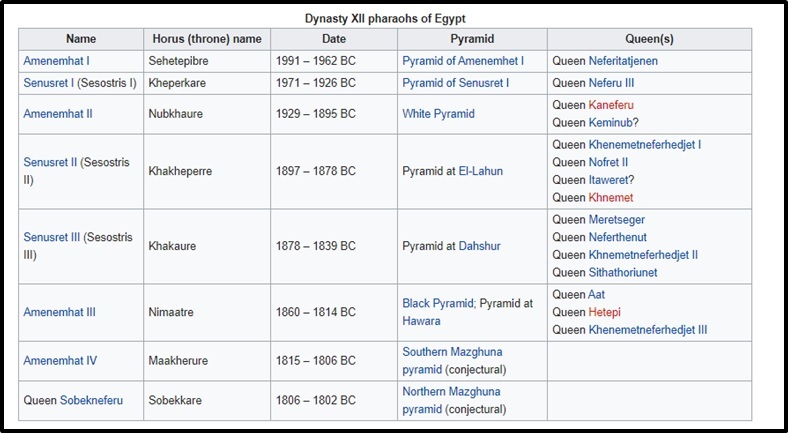
Above chart from Aidan Dodson, Dyan Hilton: The Complete Royal Families of Ancient Egypt. The American University in Cairo Press, London 2004
Joseph would serve under Senusret III (under this pharaoh all the Egyptians sold their land to the king and seemingly the government became centralized), Amenemhat III, and died in 1806 B.C. under Amenemhat IV. Knowing the pharaohs is interesting that Senusret III took all the control away from the provincial governors in upper and lower Egypt that seems to relate to the events in Genesis where all Egyptians sold everything including their land (the possession that implies power) to Joseph (ala pharaoh). Another fascinating thing to consider is the area of Faiyum - the amazing oasis west of the Nile. Consider the following ...

and
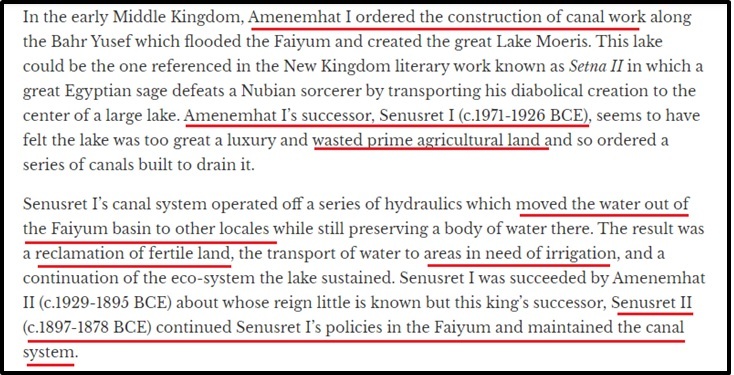
and

Accessed from the awesome and credible scholarly site on ancient Egypt -www.ancient.eu/Fayum/
It is interesting to assign actual years of the events in Joseph's life that are a result of Thiele's work as per the ancient Assyrian calendar. When we do we see that the pharaohs connected to Joseph's reign were using the ancient area of Faiyum to irrigate and reclaim agricultural land. Why? What's the big deal? Is there some reason to reclaim needed agricultural land and provide irrigation for other areas? Perhaps this is connected to Joseph and 7 years of plenty and the 7 years of famine. And when we assign years we find that the pharaoh who would've been the pharaoh in the 7 years of famine where the land all came under the control or the king is Senusret III. And he historically did something similar as we find in the account in Genesis.
The last thing that was very exciting is extending the dating into the years before the Exodus and into the life of Joseph. We find that Joseph died in 1806 B.C. (chart above) and this was 280 years before Moses was born in 1526 B.C. However, Jacob and entered Egypt when he was 130 (1876 B.C.) , he died when he was 147 (1859 B.C.) when Joseph was 56/57 years old. This means the "sons of Israel" or Jacob and his family lived for 17 years in Egypt until Jacob dies. Joseph was 57 (I will use 57 for ease of calculation) when Jacob dies and lived another 53 years when he died at 110 as we read in Gen. 50:22. That means the "sons of Israel" or the "sons of Jacob" lived another 53 years in Egypt until Joseph died for a total of 70 years. But, Joseph died 280 years before Moses was born. Finally, Moses and the Hebrews leave Egypt when Moses was 80. So, the Hebrews lived 70 years in Egypt till Joseph died, another 280 years till Moses was born, and 80 more years till they left Egypt or a total of 430 years. This is the exact number as found in Exod. 12:40. I have always asked myself where did this number come from? No one has explained it to me. And then I extended Thiele's work into the Exodus and beyond. I was "blown away" that Thiele's work verified Exod. 12:40 by me taking his work and assigning years to the Bible events. This was so so exciting to say the least. And we now read Gen. 39:1-4 knowing the year is actually happened, Joseph enters Egypt in 1916 B.C.
Rev. Ferret - who is this guy? What's his background? Why should I listen to him? Check his background at this link - https://www.dropbox.com/s/ortnret3oxcicu4/BackgrndTeacher%20mar%2025%202020.pdf?dl=0
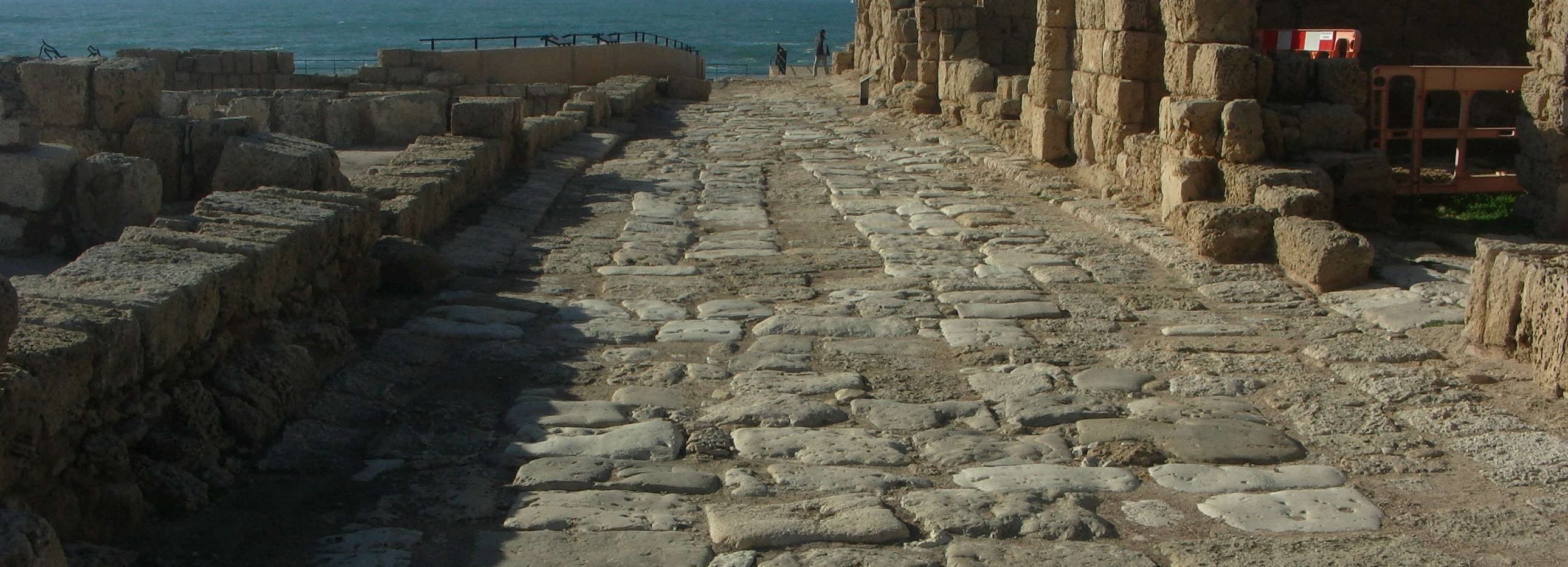
No comments yet. Be the first to say something!